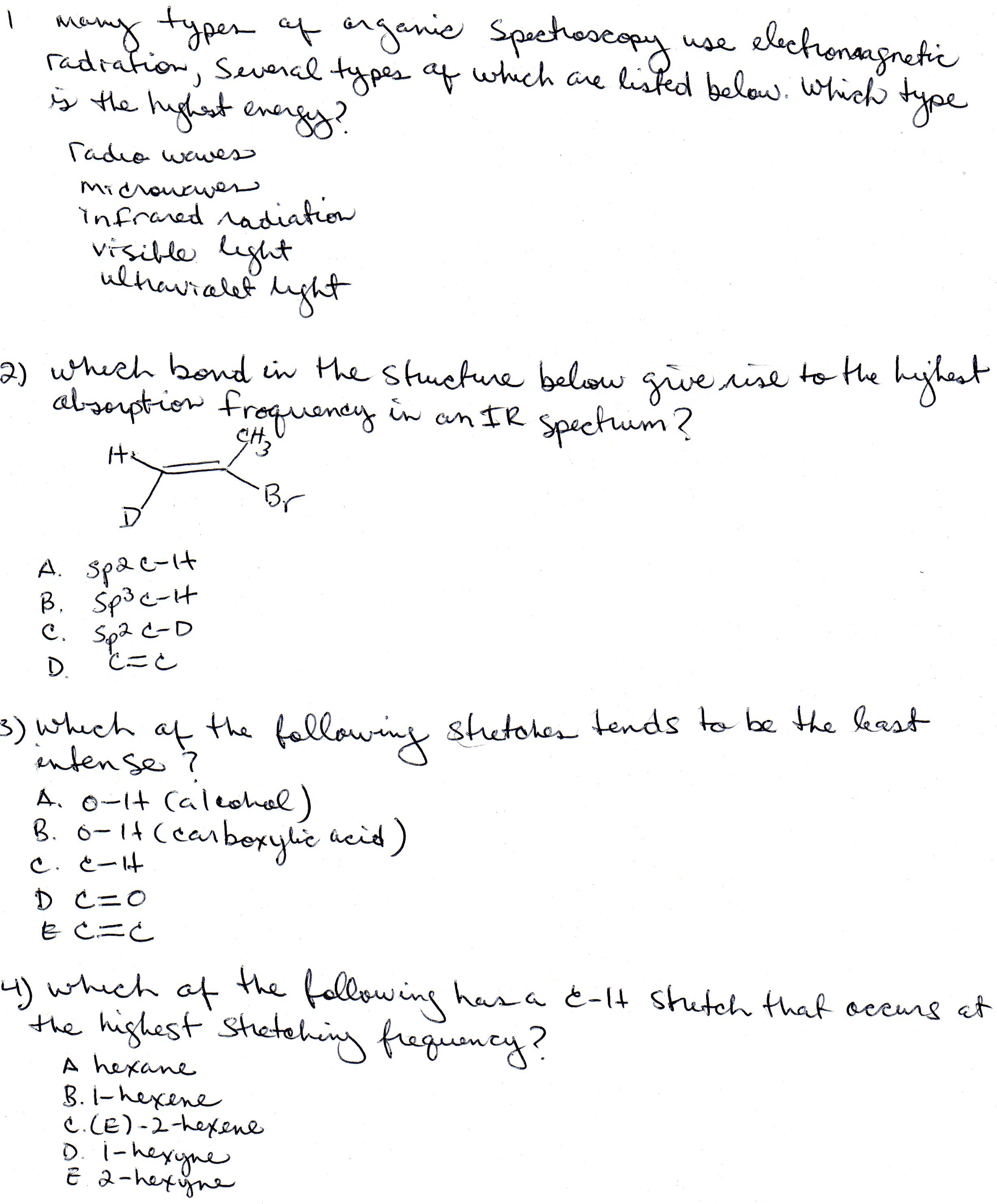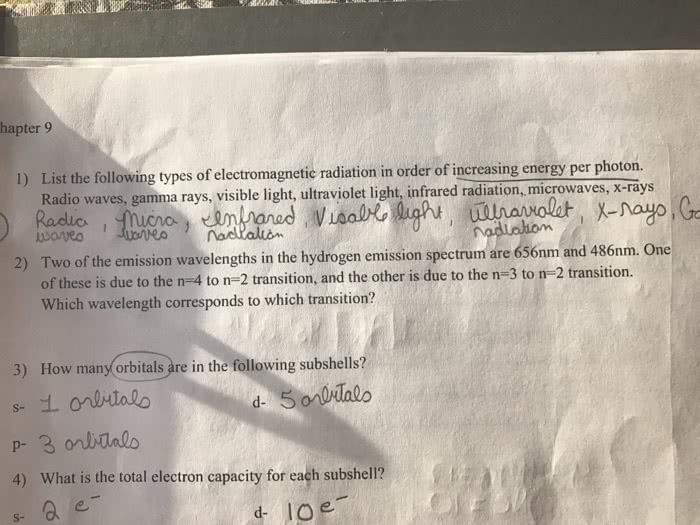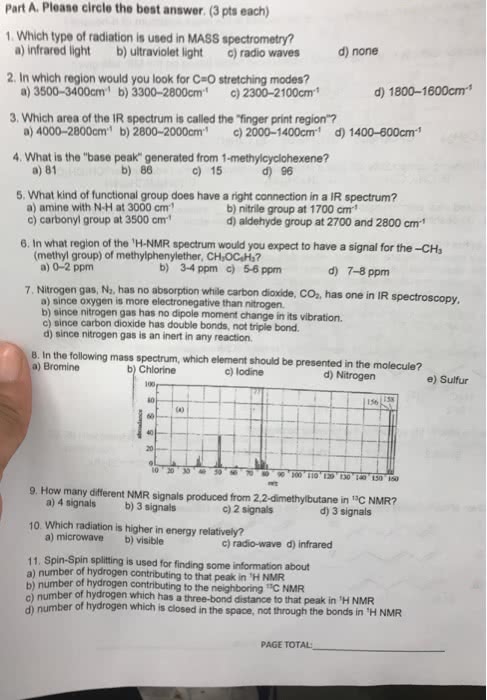CHE 211 Study Guide - Midterm Guide: Bond Dipole Moment, Absorption Band, Organic Compound

Organic Chemistry 2: Infrared Spectroscopy
IR is used to by organic chemist as a way of
identifying the presence of absence of possible
functional groups; and to also determine if a
particular reaction is completed or not
IR radiation is the portion of the
electromagnetic spectrum between microwaves
and visible light
The wavelengths of the IR regions of the
spectrum and longer than those associated with
visible light, but shorter than microwaves
The portion of the infrared region that we
are interested in is known as the vibrational region, that lies between 4000 and 625 cm-
1
The radiation in the vibrational infrared region of the ER spectrum is referred to as
wavenumbers, which are expressed in cm-1 (reciprocal cm)
Electromagnetic radiation in the region of 4000 to 625 cm-
1 corresponds to the separation between adjacent vibrational
energy states in organic molecules
When an organic molecule absorbs IR radiation, it is
excited from its ground vibrational state to its excited
vibrational state
Nuclei of the atom of an organic compound bonded by
covalent bonds undergo vibrations (or oscillations) similar to 2 balls connected by a
spring
When the organic molecule absorbs IR radiation, the absorbed energy causes an
increase in the amplitude of these vibrations of the bonded atoms
The molecule is then said to be an excited vibrational state the absorbed energy is
eventually released as heat and the molecule returns to the ground state
▪ These vibrations include stretching and bending modes
that are illustrated on the picture to the left
▪ Imagine each covalent bond is a spring with the atoms
attached on each ends; the bond can be stretched or bent in
the directions shown in the picture
▪ Each different stretch or bend will result in a different
absorption peak in the IR spectrum
find more resources at oneclass.com
find more resources at oneclass.com
Document Summary
The wavelengths of the ir regions of the. The portion of the infrared region that we are interested in is known as the vibrational region, that lies between 4000 and 625 cm- The radiation in the vibrational infrared region of the er spectrum is referred to as wavenumbers, which are expressed in cm-1 (reciprocal cm) Electromagnetic radiation in the region of 4000 to 625 cm- 1 corresponds to the separation between adjacent vibrational energy states in organic molecules. When an organic molecule absorbs ir radiation, it is excited from its ground vibrational state to its excited vibrational state. Nuclei of the atom of an organic compound bonded by covalent bonds undergo vibrations (or oscillations) similar to 2 balls connected by a spring. When the organic molecule absorbs ir radiation, the absorbed energy causes an increase in the amplitude of these vibrations of the bonded atoms.



